We are a professional review company that receives compensation from companies whose products we review. We test each product thoroughly and give high marks only to the ones that are the very best. We are independently owned, and the opinions expressed here are our own.
At-home workouts have gained immense popularity recently due to their convenience and accessibility. Whether you’re a busy professional, a parent, or prefer the comfort of your home, full-body workouts offer an efficient way to maintain fitness without needing a gym membership. These workouts engage multiple muscle groups, providing a comprehensive approach to improving strength, flexibility, and cardiovascular health.
Meet Jessica, a full-time working mom who struggled to find time for the gym. With just a few pieces of equipment and a dedicated space in her living room, she transformed her fitness routine with full-body workouts. Jessica experienced increased energy levels, improved mood, and a noticeable boost in her overall fitness—all without leaving her home.
In this guide, we’ll explore the benefits of full-body workouts, discuss essential equipment, and provide a detailed workout routine that can be performed in your living room. We’ll also share tips on maintaining consistency and progression, ensuring you can achieve your fitness goals from home comfort.
Make sure to share this article with others if you find it helpful.
Benefits of Full-Body Workouts
Full-body workouts are an excellent choice for individuals looking to maximize their fitness results in a limited time. Here are some key benefits of incorporating full-body workouts into your routine:
Time Efficiency
Full-body workouts allow you to target multiple muscle groups in a single session, saving time compared to split routines focusing on one or two areas per workout. This efficiency makes it easier to fit exercise into a busy schedule. According to Healthline, full-body workouts are particularly beneficial for those with limited time, as they provide a balanced approach to fitness. Additionally, Verywell Fit highlights that full-body routines can streamline your fitness regimen, allowing for fewer workout days without compromising results.
Improved Fitness
These workouts enhance cardiovascular health, build strength, and improve flexibility. By engaging different muscle groups, full-body exercises can boost overall fitness and help prevent injuries by promoting balanced muscle development. Men’s Health says such workouts increase heart rate and endurance while enhancing muscular strength and overall physical condition.
Muscle Balance
Working all major muscle groups helps prevent muscle imbalances, which can lead to poor posture and an increased risk of injury. By ensuring that each workout includes a variety of exercises, you can achieve a balanced physique and enhance functional fitness. Harvard Health emphasizes the importance of muscle balance, noting that balanced routines improve posture and mobility and reduce injury risk.
Accessibility
Full-body workouts can be done with minimal equipment, making them accessible to anyone with little space. Whether you use body weight, dumbbells, or resistance bands, these workouts can be adapted to fit your available resources. According to ACE Fitness, many practical full-body exercises can be performed with simple tools or even just body weight, making them ideal for home settings.
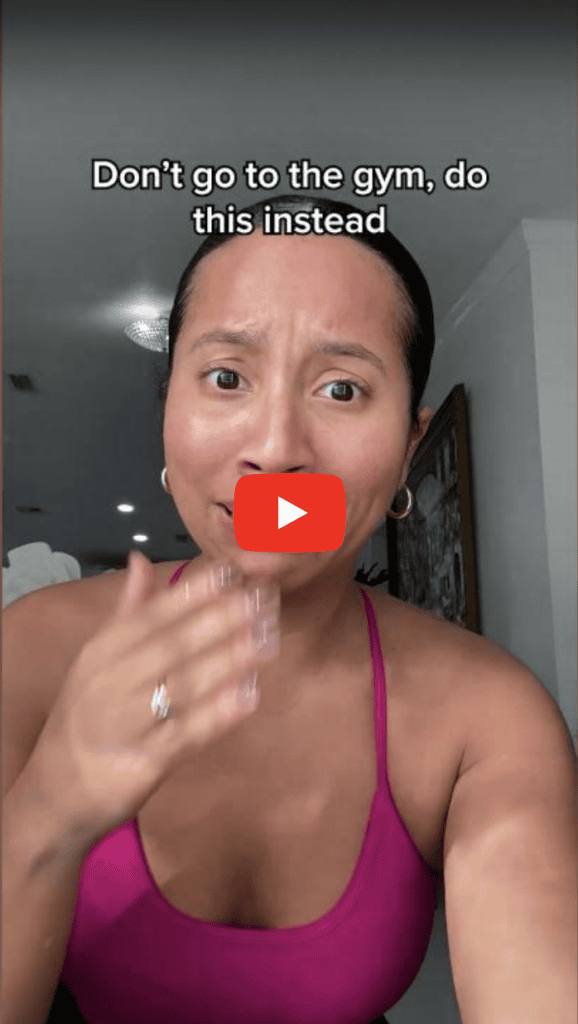
Essential Equipment for Home Workouts
You don’t need an elaborate gym setup to get started with full-body workouts at home. Here are some basic equipment options to consider:
- Body Weight: Many practical exercises, such as push-ups, squats, and planks, can be performed using your body weight.
- Dumbbells or Resistance Bands: Investing in a set of dumbbells or resistance bands can add variety and intensity to your workouts. Resistance bands are versatile and space-efficient.
- Yoga Mat: A yoga mat provides comfort and stability for floor exercises and stretches, making it a worthwhile addition to your home workout space.
- Kettlebells: These can be used for dynamic exercises like swings and squats, providing a full-body workout with just one piece of equipment.
- Stability Ball: Great for core exercises and improving balance, a stability ball can enhance various workout routines.
For more detailed recommendations, check out Self—Best Home Workout Equipment and Men’s Health—Essential Home Gym Equipment.
Warm-Up Routine

Before starting any workout, it’s essential to warm up to prepare your body and reduce the risk of injury. A good warm-up should include:
- Dynamic Stretches: Incorporate movements like arm circles, leg swings, and torso twists to increase flexibility and range of motion.
- Light Cardio: Activities such as jumping jacks, high knees, or brisk walking in place can elevate your heart rate and warm up your muscles.
- Joint Mobility Exercises: Perform movements that target the wrists, ankles, and hips to enhance mobility and reduce stiffness.
For more warm-up techniques, visit WebMD – Warm-Up Exercises and ACE Fitness – Dynamic Warm-Up.
Full-Body Workout Routine
This full-body workout routine is designed to be performed at home with minimal equipment. It targets all major muscle groups to improve strength, endurance, and overall fitness. Aim to complete this routine 2-3 times per week, allowing for rest days in between.
Exercise 1: Push-Ups
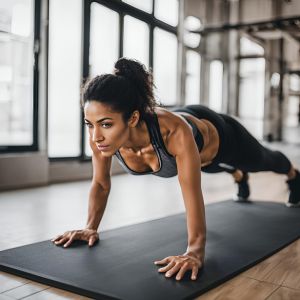
- Description: Push-ups are a classic upper-body exercise that strengthens the chest, shoulders, and triceps while engaging the core.
- How to Perform:
- Start in a plank position with your hands slightly wider than shoulder-width apart.
- Lower your body until your chest is above the floor, keeping your elbows at a 45-degree angle.
- Push through your palms to return to the starting position.
- Complete 3 sets of 10-15 repetitions.
- Variations:
- Knee Push-Ups: Perform the push-up from your knees if you need to reduce the intensity.
- Incline Push-Ups: Place your hands on an elevated surface to decrease difficulty.
- Sources: Fitness_Thrive on Youtube and Verywell Fit – How to Do Push-Ups.
Exercise 2: Squats
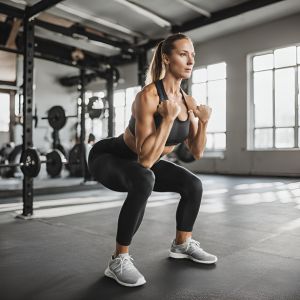
- Description: Squats are a fundamental lower body exercise that targets the quadriceps, hamstrings, glutes, and core.
- How to Perform:
- Stand with feet shoulder-width apart and toes slightly turned out.
- Lower your hips back and down as if sitting in a chair, keeping your chest up and knees aligned with your toes.
- Return to standing by pressing through your heels.
- Complete 3 sets of 12-15 repetitions.
- Variations:
- Bodyweight Squats: Use your body weight for resistance.
- Goblet Squats: Hold a dumbbell or kettlebell at chest level for added resistance.
- Sources: Harvard Health – How to Do Squats Correctly and Men’s Health – Squat Variations.
Exercise 3: Plank

- Description: Planks are an effective core exercise that strengthens the abdominals, back, and shoulders.
- How to Perform:
- Start in a forearm plank position with elbows directly under shoulders and body in a straight line from head to heels.
- Engage your core and hold the position, avoiding sagging hips or raised glutes.
- Hold for 30-60 seconds, repeating 3 times.
- Variations:
- Side Plank: Rotate onto one forearm, stacking feet for the added core challenge.
- Plank with Arm/Leg Lifts: Lift one arm or leg at a time to increase difficulty.
- Sources: Mayo Clinic – Plank Exercise Guide and Healthline – How to Do a Plank.
Exercise 4: Lunges
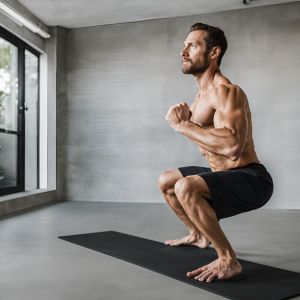
- Description: Lunges target the lower body, improving strength and balance in the quadriceps, hamstrings, and glutes.
- How to Perform:
- Stand with feet hip-width apart.
- Step forward with one leg, lowering your hips until both knees are bent at about a 90-degree angle.
- Push back to the starting position and repeat on the opposite side.
- Complete 3 sets of 10-12 repetitions per leg.
- Variations:
- Reverse Lunges: Step backward instead of forward for a variation.
- Walking Lunges: Move forward with each step to increase intensity.
- Sources: Verywell Fit – How to Do Lunges and ACE Fitness – Lunge Variations.
Exercise 5: Burpees
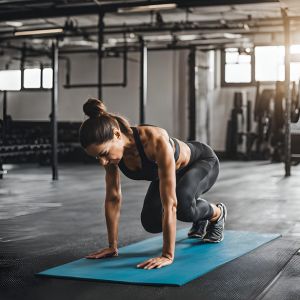
- Description: Burpees are an effective full-body exercise that combines strength and cardio. They engage multiple muscle groups, including the arms, chest, legs, and core.
- How to Perform:
- Stand with your feet shoulder-width apart, then squat down and place your hands on the floor before you.
- Jump your feet back to land in a plank position, keeping your body straight.
- Perform a push-up, ensuring your chest touches the ground.
- Jump your feet back to your hands, returning to the squat position.
- Explode upward into a jump, reaching your arms overhead.
- Repeat for 3 sets of 10-12 repetitions.
- Variations:
- Half Burpee: Omit the push-up and jump to the plank position.
- Chest-to-Floor Burpee: Lower your chest to the ground during the push-up for a more intense variation.
- Sources: Healthline – Benefits of Burpees and Live Strong – How to Do Burpees.
Exercise 6: Mountain Climbers

- Description: Mountain climbers are dynamic exercises that target the core, shoulders, and legs while providing a cardiovascular challenge.
- How to Perform:
- Begin in a plank position with your hands directly under your shoulders and your body in a straight line.
- Drive one knee toward your chest, then quickly switch legs, bringing the opposite knee in while extending the first leg back.
- Continue alternating legs at a rapid pace, maintaining a steady rhythm.
- Perform 3 sets of 30-60 seconds.
- Variations:
- Cross-Body Mountain Climbers: Bring your knee toward the opposite elbow for increased oblique engagement.
- Slow Mountain Climbers: Move slowly and with control to focus on core stability.
- Sources: Men’s Health – Mountain Climbers Guide and ACE Fitness – Mountain Climbers.
Cool-Down Routine
A proper cool-down routine helps your body transition from exercise back to rest and aids in recovery. Include the following elements:

Static Stretches
- Hamstring Stretch: Sit on the floor with one leg extended and the other bent, reaching toward your toes on the extended leg.
- Quadriceps Stretch: Stand and pull one foot toward your glutes, holding it with your hand to stretch the front of your thigh.
- Chest Stretch: Interlace your fingers behind your back and gently lift your arms to open up the chest.
- Sources: Harvard Health – Cool-Down Stretches and ACE Fitness – Stretching Techniques.
Breathing Exercises
- Deep Breathing: Inhale deeply through your nose, hold for a moment, and exhale slowly through your mouth. Repeat for 5-10 breaths to promote relaxation.
- Diaphragmatic Breathing: Place one hand on your chest and the other on your belly, focusing on expanding your diaphragm as you breathe.
- Sources: Yoga Journal – Breathing Exercises and Verywell Mind – Deep Breathing Exercises.
By incorporating this full-body workout routine into your weekly schedule, you can effectively improve your strength, endurance, and overall fitness without needing a gym. In the next section, we’ll provide tips for maintaining consistency and progression, ensuring you continue to see results from your efforts.
Tips for Success in Full-Body Workouts

Focusing on consistency, progression, and listening to your body is essential to maximize your full-body workouts at home. Here are some critical tips to help you stay on track and achieve your fitness goals:
Consistency is Key
- Set a Schedule: Establish a regular workout routine by choosing specific days and times. Consistency will help you build a habit and improve results over time. According to ACE Fitness, maintaining a consistent exercise schedule is crucial for long-term success.
- Stay Motivated: Vary your workouts, try new routines, or set specific goals to keep them interesting. Consider tracking your progress to see improvements and stay committed.
Gradual Progression
- Increase Intensity Gradually: As your fitness level improves, gradually increase the intensity of your workouts by adding more repetitions, sets, or weights. This will help you avoid plateaus and continue making progress. Healthline recommends this approach.
- Challenge Yourself: Incorporate new exercises or more challenging variations to keep your body adapting and improving. Verywell Fit recommends progressing by adding resistance or changing exercise dynamics.
Listen to Your Body
- Rest and Recovery: Allow your muscles time to recover between workouts. Rest is essential for muscle growth and injury prevention. Aim for at least one rest day between full-body sessions. For more tips, read this insightful article from the Mayo Clinic. This WebMD article also explains why listening to your body is important.
- Avoid Overtraining: Pay attention to signs of fatigue or discomfort and adjust your workouts accordingly. As Verywell Fit discusses, overtraining can lead to burnout or injury, so giving your body the rest it needs is essential.
Nutrition and Hydration
- Fuel Your Body: Support your workouts with a balanced protein, healthy fats, and complex carbohydrates diet. Proper nutrition is vital for energy and recovery.
- Stay Hydrated: Drink plenty of water before, during, and after your workouts to support overall health. Dehydration can affect performance and recovery, and this Harvard Health article shares many valuable insights.
Additional Resources
- Online Workout Platforms: Consider using online resources or fitness apps for guided workouts and additional motivation. Websites like Fitness Blender and Nike Training Club offer a variety of home workout routines.
- Community Support: Join online fitness communities or social media groups to share experiences, tips, and encouragement with others on a similar fitness journey.
Focusing on these tips can help you maximize the benefits of your full-body workouts at home and maintain a healthy, active lifestyle. In the conclusion, we’ll summarize the key points of this guide and encourage you to start your workout journey today.
Conclusion

Incorporating full-body workouts into your home fitness routine offers a range of benefits, from improving overall strength and cardiovascular health to saving time and increasing flexibility. You can achieve a balanced and effective workout regimen without needing a gym by using minimal equipment and focusing on exercises that engage multiple muscle groups.
Recap of Key Points
- Time Efficiency: Full-body workouts target multiple muscle groups in one session, making them ideal for busy individuals who want to maximize their time.
- Improved Fitness: These workouts enhance strength, endurance, and flexibility while promoting muscle balance and reducing the risk of injury.
- Accessibility: With minimal equipment, full-body workouts can be easily adapted to fit your home environment, providing a convenient and effective fitness solution.
Encouragement to Start
Embarking on a full-body workout journey at home can be a rewarding experience that improves your physical and mental well-being. You can make significant progress in your fitness journey by setting achievable goals, maintaining consistency, and listening to your body.
Begin your full-body workout routine today and experience the benefits of exercising from the comfort of your home. Share your progress and challenges with others to stay motivated and inspired.
Explore online resources and communities dedicated to home workouts for additional guidance and tips. Whether you’re just starting or looking to enhance your current routine, these full-body workouts provide a comprehensive approach to maintaining a healthy and active lifestyle.
By following this guide, you can enjoy the numerous benefits of full-body workouts, improve your fitness levels, and achieve your health goals. Start today, and take the first step toward a healthier, more active you!
To your success,
Rickard



What do you think about the article you've just read? Please tell me below.